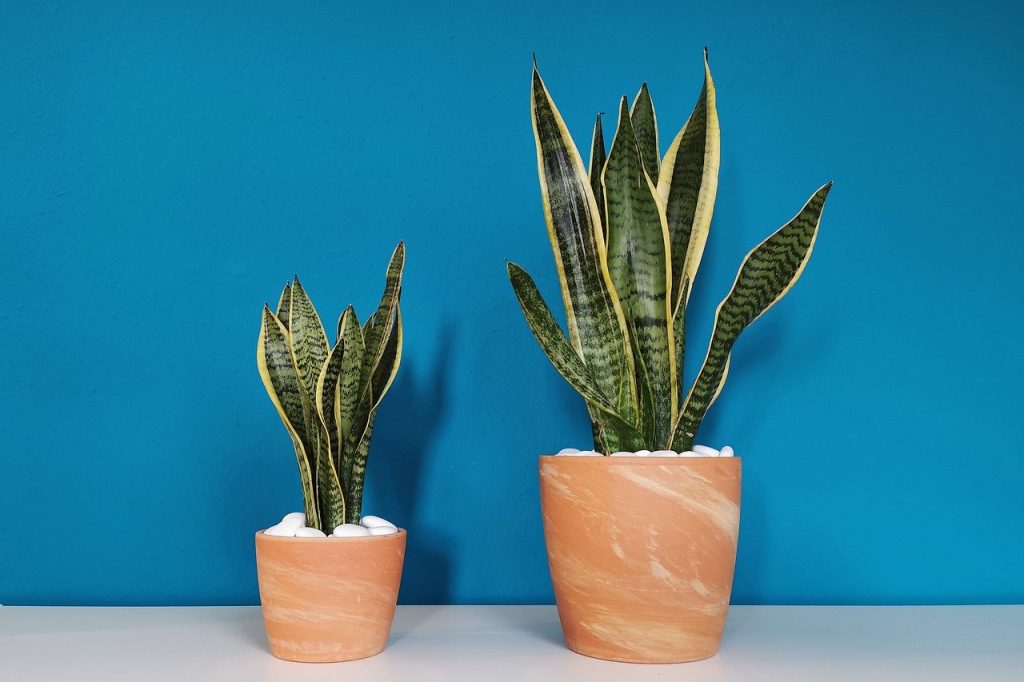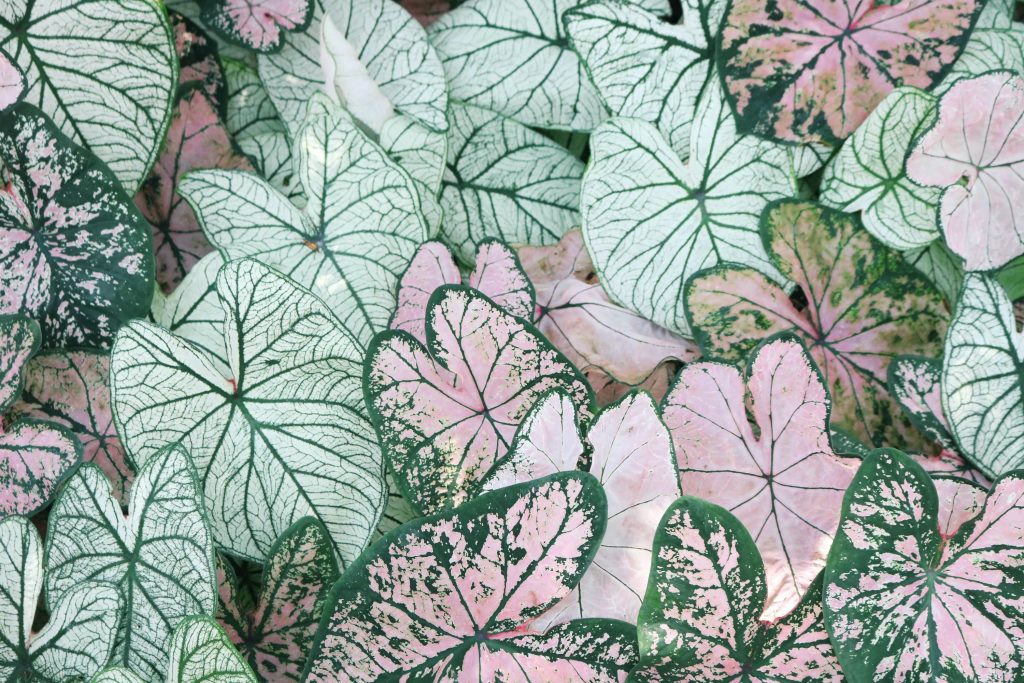With large, lush silver and green striped leaves, Calathea Orbifolia is a gorgeous house plant to care for!
In addition to being highly decorative, this relatively low maintenance plant can tolerate shade. As it’s also capable of purifying the air you breathe, why on earth wouldn’t you want to care for this glorious bit of greenery?
This guide to nurturing your very own Calathea Orbifolia draws on my experience of growing this beautiful plant. Covered are facts and FAQs, plus common issues and top care tips. Let’s make a start by sharing a little about Calathea Orbifolia.
Table of Contents
About Calathea Orbifolia
Calathea Orbifolia is the prettiest of all the Calathea varieties in my opinion. Their big, round leaves feature attractive markings that resemble pretty silver stripes painted on by a skilled watercolor artist. Underneath, the foliage is also silvery in color.
Calathea Orbifolia may also be known as Goeppertia Orbifolia and it originates in the American Tropics. There are around 60 species of Calathea, and another striking example is the Calathea Zebrina with bolder, less subtle striping. Calathea Orbifolia is one of the largest Calathea species.
Looks aside, some of the key benefits of growing Calathea Orbifolia in your home include the fact that it can tolerate partial shade. It’s also a house plant that’s safe for homes with pets, and can also help to purify the air all animal and human occupants of your house are breathing.
Keep reading to find out how to give this attractive plant the care it needs. Then it will be sure to look as gorgeous as possible!
Calathea Orbifolia Facts
Origin
Calathea Orbifolia is a plant native to the Tropical Americas – Bolivia in particular. So it’s used to the steamy jungle, where light filtered by the trees above allows its leaves to develop their striking, silvery striped foliage.
Size
This plant can reach a maximum height of around a meter. Every large leaf may measure up to 30cm each!
Growth
Calathea Orbifolia grows at a steady pace, mainly during the spring and summer seasons. During the colder months it’s likely not to progress much, if at all.
Flowering
So does Calathea Orbifolia flower when kept as a houseplant? Not in general, though if conditions are just right then you could get lucky! When they do appear, the blooms are small and white.

Calathea Orbifolia Care
Sunlight
Dusting the leaves regularly – and gently – can ensure your plant gets all the sunlight it needs. Never apply a leaf shine product, though, as this can damage the delicate foliage. It might even result in brown-tipped leaves.
Like the other Calathea varieties, the Calathea Orbifolia craves dappled or indirect sunlight. Sufficient diffused light will make those markings nothing short of spectacular. Too much direct light isn’t a good thing though.
Low light conditions may be OK for Calathea Orbifolia in some cases. Excess bright sunshine, though, might well kill this one off before you even get started!
If you think about it, this makes perfect sense. A Bolivian jungle environment will see the plant getting lots of dappled light as it shines through the foliage. So ideally you want to replicate those conditions as closely as you can.
A north or east facing window is better than one that faces west or south. We found that moving it nearer or further from the window when it didn’t look its best worked for us. Once the plant looks healthy and lush, you can then leave it exactly where it is.
Temperature
Around 50°F (15°C) is about as low as Calathea Orbifolia can cope with, so it’s not one for colder homes or countries with sub-zero overnight lows! A tropical climate is just what this plant wants.
A temperature of between 64°F and 74°F(18 to 23°C) is ideal. Put it in a well-ventilated spot without cold drafts for it to fare best. Even a short spell of cold can spell disaster for this plant, so don’t keep it in a chilly place overnight.
Humidity
Like other Calathea varieties, the Calathea Orbifolia likes things pretty steamy – just think of the tropics from which it originates. It’s not a plant that wants to dry out, and giving it a boost whenever you can will pay dividends.
This plant loves to be misted with a suitable plant sprayer. You might even like to take it into the bathroom with you now and then, as I do. It will adore making the most of all that steam from the shower!
If your home is less than tropical in terms of humidity, then a houseplant humidifier can be a worthwhile investment.

Watering
Calathea Orbifolia fares best when the soil it’s potted in is damp but by no means soggy. Water little and often, trying to keep the soil moist but never waterlogged. Use a saucer to catch excess water and make sure this is poured away as soon as possible to prevent stagnation.
Distilled or filtered water is much better for this plant than regular water straight from the faucet. Alternatively, clean rainwater is also good. This is a plant prone to root rot, so make sure you never let it get bogged down in soil that’s too wet.
It’s a good idea to use a moisture meter with this houseplant, as it can be hard to get watering right. We find it takes all the guesswork out of it, and they’re very affordable to buy.
It might sound a little strange, but if your Calathea Orbifolia’s leaves seem to move less than usual then it may need more water. The same can apply if the foliage stops folding up at night.
Feeding
During the growth season, Calathea Orbifolia can benefit from being fed monthly. Try a houseplant fertilizer that’s rich in nitrogen. Make sure you dilute this before dishing out that dose.
Normally one part fertilizer to three parts water is about right. Organic fertilizers are best for Calathea Orbifolia, which may not react well to synthetic residue build-up.
Potting
Always use a container with drainage holes and a saucer beneath. Any excess water should be tipped away without delay if you want to avoid your plant suffering. Plus this helps to make sure your home smells fresh!
Repotting Calathea Orbifolia too often may not go down well. You’ll need to do this once the roots start to protrude from the bottom of the pot, however. This visual prompt gives you another good reason to always use pots with drainage holes.
Pests
Common houseplant pests that can affect Calathea Orbifolia include leaf-sucking insects such as thrips. Otherwise, the main dangers are mildewing, fungus and leaf spot. Rotting roots are the key threat to the health of your Calathea Orbifolia.
Trimming
This isn’t really a plant that requires pruning. You can trim away any brown or yellow leaves, however. Always use a squeaky-clean, super sharp pair of scissors to cut away any whole or partial leaves.
Soil
Soil with good drainage is a must for this plant. The ideal Calathea Orbifolia soil may combine a third perlite, orchid bark or pumice with two-thirds coco coir or peat. Some richness in the soil is required, and it’s best to keep it damp rather than wet.
Avoid soil containing vermiculite, as this can engender root rot. This is because it retains higher levels of water.
Propagation
Calathea Orbifolia can be propagated via the process of division. To be honest, though, this is best left to the experts. It can be really tricky to get Calathea Orbifolia propagation right!
If you do want to give it a try, during the middle of the growth season is best. So leave it until late spring or early summer if you are having a go.
Safety
The good news is that this houseplant is perfectly safe for pets and kids to sample. Though you might not be too happy to see canine or human tooth marks around the edges of those big, pretty leaves!

Common issues with Calathea Orbifolia
Watch out for leaf droop, brown-tipped foliage and dry soil with your Calathea Orbifolia. This may be a clear sign that something’s not quite right with your plant.
Sunlight
Sunlight levels ideally need to be just right for Calathea Orbifolia. A lack of sunlight can be preferable to too much light exposure, though. Think of the jungle floor and all that light which is diffused by the trees towering above, and you’ll get the idea.
If your plant has dull leaves without much striping, it can be a sign that it needs more sunlight. Experiment with its position by a north or east facing window, until you find the spot that seems to suit it best.
Water
If you don’t give Calathea Orbifolia clean water, then you’re more likely to encounter problems. Discolored leaves can be caused by the sort of salts and chlorine present in unfiltered water. Water that’s been filtered or distilled is the best choice.
You can also use rainwater, but make sure it’s fresh and clean if you do.
Temperature
You’ll know if your home is too cold for Calathea Orbifolia, as it will react very quickly. Typical signs may include curling or drooping leaves.
Even a brief exposure to a chilly draft can wreak havoc with the health of this plant. It also prefers a fairly stable temperature. Sudden changes can also cause the foliage to look less than its best, and this can happen pretty fast!
The Growth Cycle
Like many other houseplants, Calathea Orbifolia is more active during spring and summer. In winter, it’s virtually dormant.
Feed your plant only during the growth season. Also try to keep the soil it’s growing in damp, rather than wet, during all the seasons of the year. This can help keep pests away.
House Plant Pests
Pests that can affect Calathea Orbifolia may include thrips, aphids, whitefly and mealybugs.
This plant may also suffer from powdery mildew, leaf spot or white soil mold.
It may sound overly simple, but correct watering techniques reduce the risk of infection. Clean filtered or distilled water given at just the right intervals can really help reduce the incidence of pests.

Calathea Orbifolia FAQs
Is Calathea Orbifolia hard to care for?
Calathea Orbifola isn’t too tricky to care for. But this might well depend on the temperature, humidity and light levels where you live. Indirect sunlight, damp soil, warm temperatures, clean water and high humidity are very important when caring for Calathea Orbifola.
Ideally these will replicate tropical South American jungle conditions.
Can Calathea Orbifolia grow in low light?
Low light is better for Calathea Orbifolia than too much direct sunlight. Ideally, though, you want enough diffused light for the leaf colors to fully develop. Too much light can damage the delicate leaves.
Where can I put Calathea Orbifolia?
Calathea Orbifolia will do best by a north-facing window. An east-facing one might also work, but avoid south or west facing spots.
If you can, place this plant in a warm, humid environment such as a bathroom or kitchen. This should provide the diffused light and humidity it needs to flourish.
Final Thoughts on Calathea Orbifolia Care
If you were wondering about how to care for Calathea Orbifolia, I hope this article has been useful. We love having this pretty plant around the house, and with the right care it can bring a touch of the exotic into any home!
Check out more of our plant care guides below:




